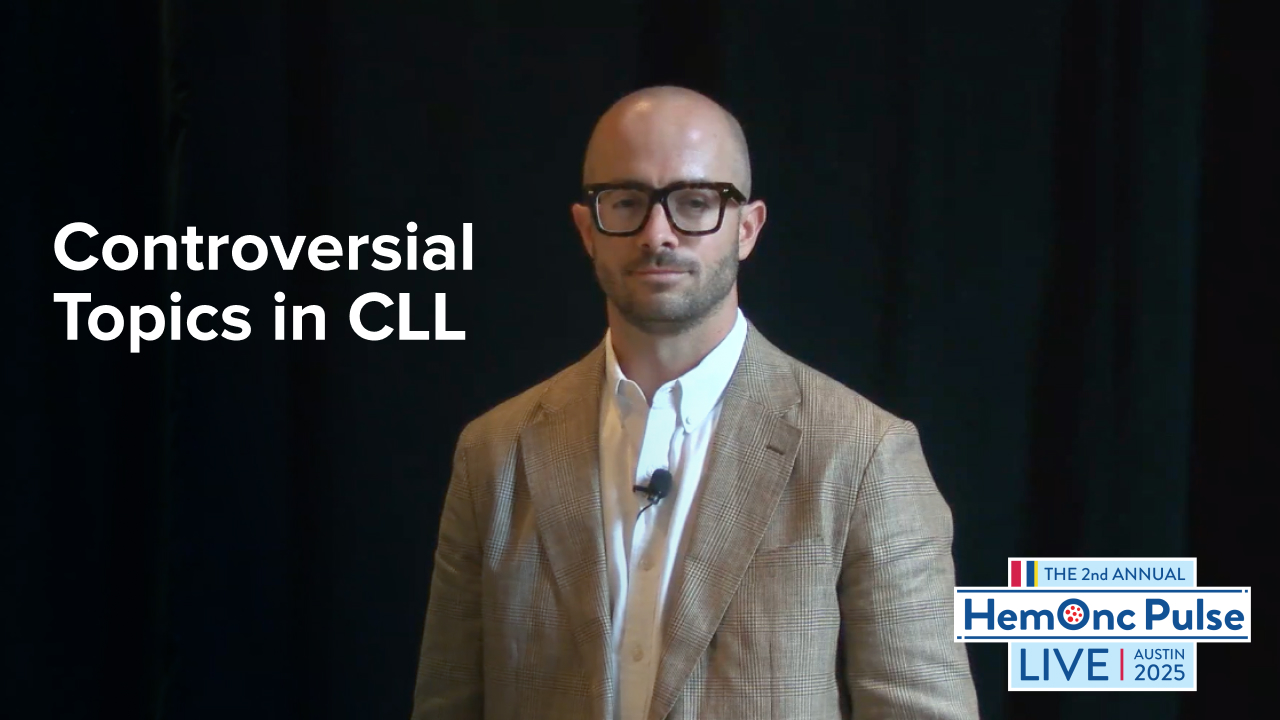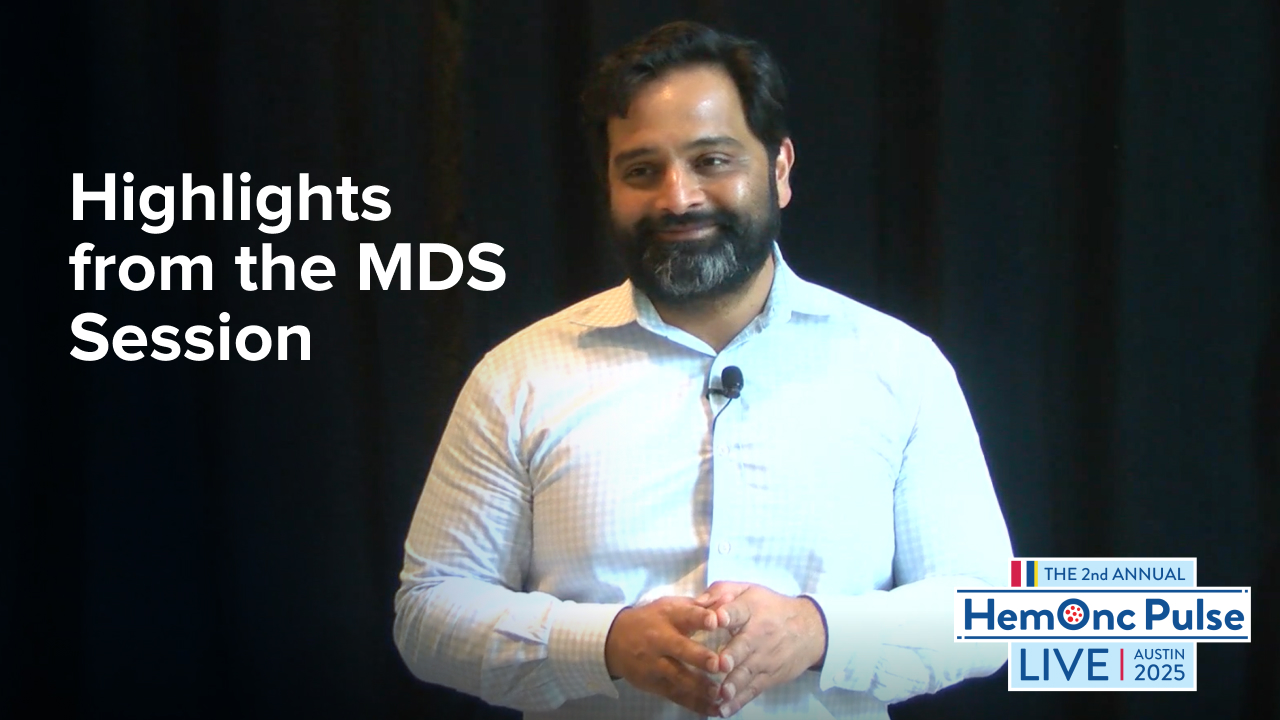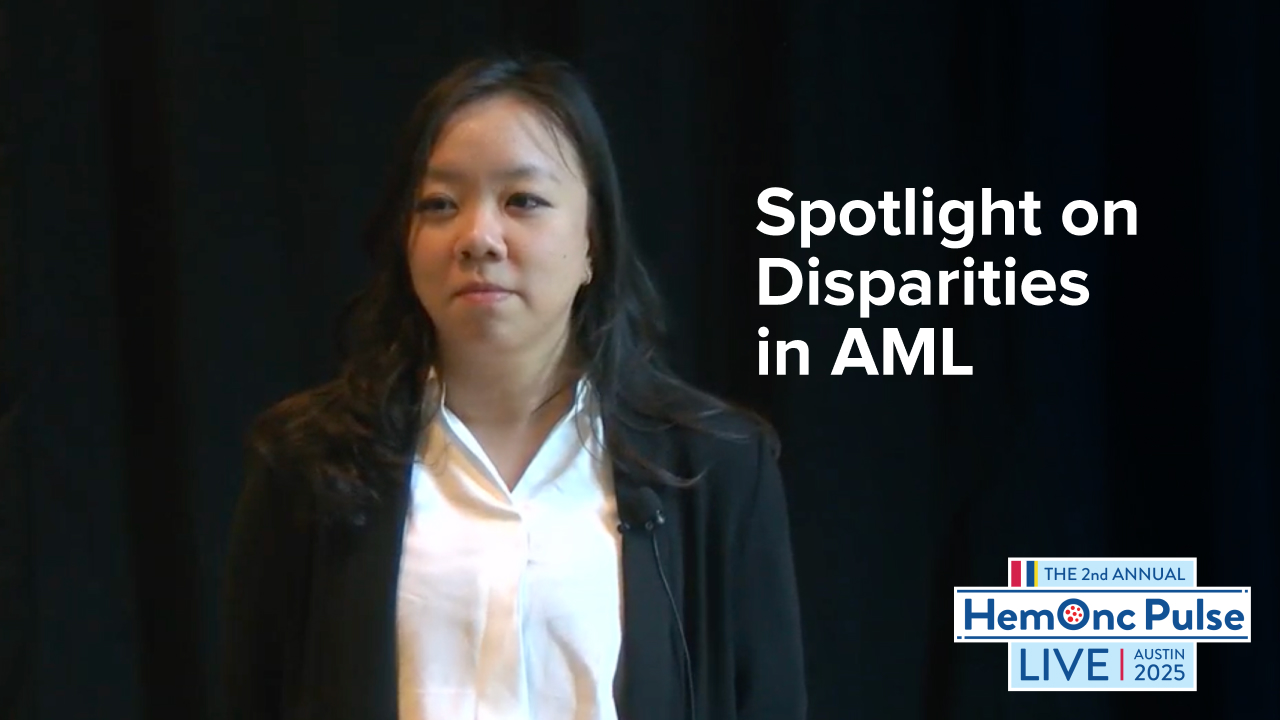Panel Predicts the Future of MDS
By Hana Safah, MD, Jamile Shammo, MD, Andrew Brunner, MD, Tiffany Tanaka, MD - Last Updated: January 24, 2024A roundtable discussion, moderated by Hana Safah, MD, of the Tulane University School of Medicine, focused on the latest data in myelodysplastic syndromes presented at the 65th ASH Annual Meeting & Exposition. Dr. Safah was joined by Jamile Shammo, MD; Andrew Brunner, MD; and Tiffany Tanaka, MD.
In the last segment of the roundtable series, the panel shares their outlook for the future of MDS research and treatment.
Watch more segments in this series.
—
Dr. Safah: What do you see in the future? Where do you see us going from here? I would love to hear from each of you about the future in MDS [myelodysplastic syndromes]. Where do you think things are going?
Dr. Shammo: I think what I like seeing is actually correlating responses with biological underpinning of this, molecularly from an inflammasome perspective, because this is the hot area. But I think I would like to say that such correlation, while very important, but I think if we’re talking about reducing inflammation as a positive end result of utilizing drugs like luspatercept, that I think we have to link it to a much more palpable outcome. Is there a reduction in clonal evolution, for example, because you are reducing? That is what I like to see. But I totally agree with you in that what we’re seeing, it’s not just a simple good old response, no response. It’s a little bit more understanding of the disease and how it correlates with the responses is amazing.
Dr. Brunner: I would love to see our treatment paradigm for low-risk MDS, which is largely supportive still, but start to shift into how can we modify disease? How can we get rid of subclones? How can we change the survival of these patients? I think we’re starting to see hints of that interest in looking at that. We haven’t talked about a trial that was also reported this summer of imetelstat and it’s in different space. Those are heavily transfusion-dependent patients. It’s much later in the disease course of low-risk patients. But if a low-risk patient doesn’t evolve, they may still go through years of therapy, but then eventually will need these later lines. I think the interesting data that they’re starting to look at imetelstat data but then is spreading to many of our trials in MDS is seeing clearance or reduction in VAF of these mutations.
Can we shift our approach in treating patients from not just supporting them through coexisting with disease but is there a way to maybe reduce the disease, get rid of it? That’s our goal in high-risk disease, but in low risk and early phases of disease we talked a lot about early intervention. If I could clear your clone before you ever got MDS, wouldn’t that be something to dream toward? I think that there are hints of the future that we’re seeing, and I’m excited to see where that next step goes.
Dr. Tanaka: Yeah, definitely. I think your point is really well taken with being a little bit more proactive for lower-risk MDS. I think in the past it’s more about supportive care, not intervening too quickly, letting the patient be. But now if we can actually change the course of the disease, make the bone marrow a little bit healthier, reduce that inflammation, potentially clear out these mutant clones, then that’s a really strong argument to intervene sooner. I really want to see that randomized study to see if early luspatercept is favorable, just like how it is for lenalidomide. Then the other thing I wanted to mention is with the MEDALIST trial, I remember that the responders and the non-responders tracked together. Luspatercept/placebo responders versus luspatercept/placebo non-responders, they actually had similar outcomes. That’s encouraging in that luspatercept doesn’t promote clonal evolution, which is a question we worry about with lenalidomide and other agents. Lots to think about, especially how to sequence all these potential therapies. That’s the big question.
Dr. Safah: I think that’s a very important point, you are bringing up sequencing. We also want to look at combination of certain … is it time to combine luspatercept with others? Thank you for bringing up the imetelstat data with IMerge. That is eye-opening because we’re not seeing only, in that what I call population of patients with unmet need because when they fail, we have nothing to treat other than HMAs [hypomethylating agents] and we know they’re not going to respond that much. But that’s another very important [thing] for that population of patients. But also it’s the change in the nature of the disease, the decrease in the allele burden, the VAF, that’s all very important data. We’re also learning about new agents that probably target also inflammation in patients with tattoos, that are positive for tattoos versus those who are not. Again, we’re going down to what Jamile said, the molecular abnormalities and the biology of the disease. Thank you so much for the discussion, and I hope we’ve shed light on what is new and what’s coming up.






 © 2025 Mashup Media, LLC, a Formedics Property. All Rights Reserved.
© 2025 Mashup Media, LLC, a Formedics Property. All Rights Reserved.